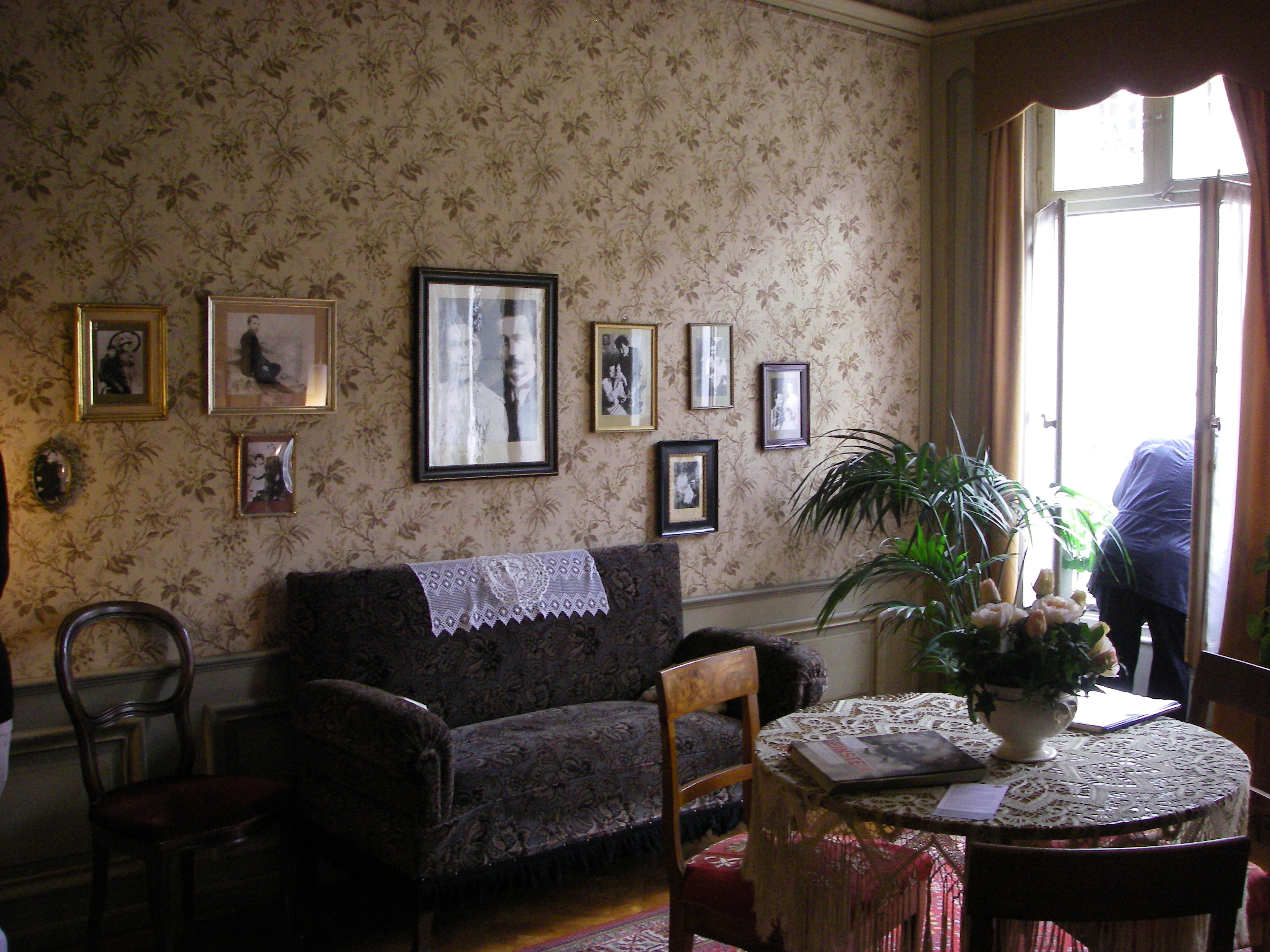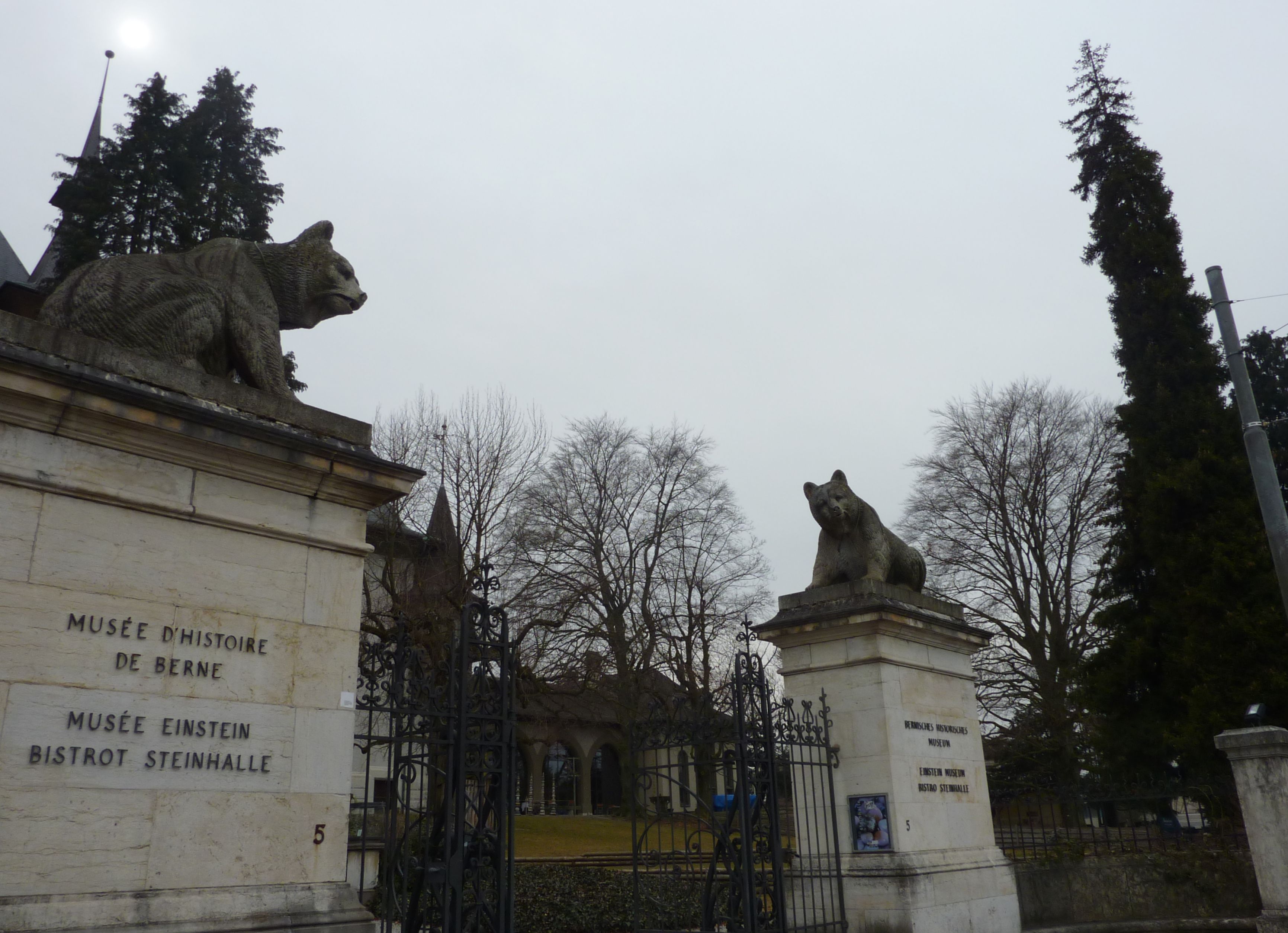|
Einsteinhaus
The Einsteinhaus (Einstein House) is a museum and a former residence of Albert Einstein. It is located on Kramgasse No. 49 in Bern, Switzerland. A flat on the second floor of the house was occupied by Einstein, his wife Mileva Marić, and their son Hans Einstein from 1903 to 1905. The ''Annus Mirabilis'' papers, which presented Einstein's theory of relativity and contributed substantially to the foundation of modern physics, were written here and published in the ''Annalen der Physik''. During this time Einstein worked at the Federal Institute of Intellectual Property. The living conditions of Einstein and his family are shown accurately in the apartment on the second floor with furniture from that time. Einstein's biography and his life's work are presented on the third floor. A smaller permanent exhibition is located at the Historical Museum of Bern The Bern Historical Museum (german: Bernisches Historisches Museum, french: Musée d’Histoire de Berne) is the second larges ... [...More Info...] [...Related Items...] OR: [Wikipedia] [Google] [Baidu] |
Historical Museum Of Bern
The Bern Historical Museum (german: Bernisches Historisches Museum, french: Musée d’Histoire de Berne) is the second largest historical museum in Switzerland. It was designed by the Neuchâtel architect André Lambert and built in 1894. Since it was initially conceived as the Swiss National Museum (which the city of Zurich was later chosen to host), the architect took as his model various historic castles from the 15th and 16th centuries. An extension to the original museum building was completed in 2009. The museum contains collections related to the history of Bern from prehistoric times to the present and other artefacts on permanent display from Asia, Oceania, America and Egypt. One of the most remarkable items in the collection is the Muri statuette group, a group of six Gallo-Roman bronze figurines. The Bern Historical Museum is a heritage site of national significance. Over the museum's entrance is a glass mosaic, "The Age of History", featuring the figures of Po ... [...More Info...] [...Related Items...] OR: [Wikipedia] [Google] [Baidu] |
Kramgasse
The Kramgasse ("Grocers Alley") is one of the principal streets in the Old City of Bern, the medieval city centre of Bern, Switzerland. It was the center of urban life in Bern until the 19th century.de Capitani, 8. Today, it is a popular shopping street. Its length, slight curve and long line of Baroque façades combine to produce Bern's most impressive streetscape.Caviezel et al., 188. The Kramgasse and its buildings are a heritage site of national significance and part of the UNESCO Cultural World Heritage Site that encompasses the Old City. Topography The Kramgasse is some longHofer, 242. and lies at the center of the old city. It is the western half of the central axis of the city's oldest part, the ''Zähringerstadt'', built right after the founding of the city in 1191. It is bounded to the west by the ''Zytglogge'', Bern's iconic clock tower that served as the city's main gate tower in the 12th century. In the east, the '' Kreuzgasse'', literally a "crossroads", separat ... [...More Info...] [...Related Items...] OR: [Wikipedia] [Google] [Baidu] |
Bern
german: Berner(in)french: Bernois(e) it, bernese , neighboring_municipalities = Bremgarten bei Bern, Frauenkappelen, Ittigen, Kirchlindach, Köniz, Mühleberg, Muri bei Bern, Neuenegg, Ostermundigen, Wohlen bei Bern, Zollikofen , website = www.bern.ch Bern () or Berne; in other Swiss languages, gsw, Bärn ; frp, Bèrna ; it, Berna ; rm, Berna is the ''de facto'' capital of Switzerland, referred to as the "federal city" (in german: Bundesstadt, link=no, french: ville fédérale, link=no, it, città federale, link=no, and rm, citad federala, link=no). According to the Swiss constitution, the Swiss Confederation intentionally has no "capital", but Bern has governmental institutions such as the Federal Assembly and Federal Council. However, the Federal Supreme Court is in Lausanne, the Federal Criminal Court is in Bellinzona and the Federal Administrative Court and the Federal Patent Court are in St. Gallen, exemplifying the federal nature of the Confederation. ... [...More Info...] [...Related Items...] OR: [Wikipedia] [Google] [Baidu] |
Mileva Marić
Mileva Marić ( sr-cyr, Милева Марић; 19 December 1875 – 4 August 1948), sometimes called Mileva Marić-Einstein ( sr-cyr, Милева Марић-Ајнштајн, Mileva Marić-Ajnštajn), was a Serbian physicist and mathematician and the first wife of Albert Einstein from 1903 to 1919. She was the only woman among Einstein's fellow students at Zürich Polytechnic and was the second woman to finish a full program of study at the Department of Mathematics and Physics. Marić and Einstein were collaborators and lovers and had a daughter Lieserl in 1902, whose fate is unknown. They later had two sons, Hans Albert and Eduard. They separated in 1914, with Marić taking the boys and returning to Zürich from Berlin. They divorced in 1919; that year Einstein married again. When he received the Nobel Prize in 1921, he transferred the money to Marić, chiefly to support their sons; she had access to the interest. In 1930, their second son Eduard had a breakdown at about ag ... [...More Info...] [...Related Items...] OR: [Wikipedia] [Google] [Baidu] |
Annus Mirabilis Papers
The ''annus mirabilis'' papers (from Latin '' annus mīrābilis'', "miracle year") are the four papers that Albert Einstein published in ''Annalen der Physik'' (''Annals of Physics''), a scientific journal, in 1905. These four papers were major contributions to the foundation of modern physics. They revolutionized science's understanding of the fundamental concepts of space, time, mass, and energy. Because Einstein published these remarkable papers in a single year, 1905 is called his ''annus mirabilis'' (''miracle year'' in English or ''Wunderjahr'' in German). The first paper explained the photoelectric effect, which was the only specific discovery mentioned in the citation awarding Einstein the Nobel Prize in Physics. The second paper explained Brownian motion, which led reluctant physicists to accept the existence of atoms. The third paper introduced Einstein's theory of special relativity. The fourth, a consequence of the theory of special relativity, developed the principle ... [...More Info...] [...Related Items...] OR: [Wikipedia] [Google] [Baidu] |
Swiss Federal Institute Of Intellectual Property
The Swiss Federal Institute of Intellectual Property ( French: ''Institut fédéral de la propriété intellectuelle'', IPI; German: ''Eidgenössisches Institut für Geistiges Eigentum'', IGE; Italian: ''Istituto federale della proprietà intellettuale''), based in Bern, is an agency of the federal administration of Switzerland responsible for patents, trademarks, geographical indications, industrial designs and copyright. It is part of the Federal Department of Justice and Police. Since 1996, it operates as an autonomous agency with control of its own budget. History The Federal Intellectual Property Agency was founded on 15 November 1888. Albert Einstein worked there as a patent clerk for several years, including 1905, his ''Annus Mirabilis'' (miracle year). That year, while continuing to work on patents, Einstein published four groundbreaking papers that are fundamental to modern physics. The agency was renamed the Federal Office of Intellectual Property in 1978 as part of ... [...More Info...] [...Related Items...] OR: [Wikipedia] [Google] [Baidu] |
Museums In Bern
A museum ( ; plural museums or, rarely, musea) is a building or institution that cares for and displays a collection of artifacts and other objects of artistic, cultural, historical, or scientific importance. Many public museums make these items available for public viewing through exhibits that may be permanent or temporary. The largest museums are located in major cities throughout the world, while thousands of local museums exist in smaller cities, towns, and rural areas. Museums have varying aims, ranging from the conservation and documentation of their collection, serving researchers and specialists, to catering to the general public. The goal of serving researchers is not only scientific, but intended to serve the general public. There are many types of museums, including art museums, natural history museums, science museums, war museums, and children's museums. According to the International Council of Museums (ICOM), there are more than 55,000 museums in 202 count ... [...More Info...] [...Related Items...] OR: [Wikipedia] [Google] [Baidu] |
Houses In Switzerland
A house is a single-unit residential building. It may range in complexity from a rudimentary hut to a complex structure of wood, masonry, concrete or other material, outfitted with plumbing, electrical, and heating, ventilation, and air conditioning systems.Schoenauer, Norbert (2000). ''6,000 Years of Housing'' (rev. ed.) (New York: W.W. Norton & Company). Houses use a range of different roofing systems to keep precipitation such as rain from getting into the dwelling space. Houses may have doors or locks to secure the dwelling space and protect its inhabitants and contents from burglars or other trespassers. Most conventional modern houses in Western cultures will contain one or more bedrooms and bathrooms, a kitchen or cooking area, and a living room. A house may have a separate dining room, or the eating area may be integrated into another room. Some large houses in North America have a recreation room. In traditional agriculture-oriented societies, domestic animals such as c ... [...More Info...] [...Related Items...] OR: [Wikipedia] [Google] [Baidu] |
Historic House Museums In Switzerland
History (derived ) is the systematic study and the documentation of the human activity. The time period of event before the invention of writing systems is considered prehistory. "History" is an umbrella term comprising past events as well as the memory, discovery, collection, organization, presentation, and interpretation of these events. Historians seek knowledge of the past using historical sources such as written documents, oral accounts, art and material artifacts, and ecological markers. History is not complete and still has debatable mysteries. History is also an academic discipline which uses narrative to describe, examine, question, and analyze past events, and investigate their patterns of cause and effect. Historians often debate which narrative best explains an event, as well as the significance of different causes and effects. Historians also debate the nature of history as an end in itself, as well as its usefulness to give perspective on the problems of the p ... [...More Info...] [...Related Items...] OR: [Wikipedia] [Google] [Baidu] |
Theory Of Relativity
The theory of relativity usually encompasses two interrelated theories by Albert Einstein: special relativity and general relativity, proposed and published in 1905 and 1915, respectively. Special relativity applies to all physical phenomena in the absence of gravity. General relativity explains the law of gravitation and its relation to the forces of nature. It applies to the cosmological and astrophysical realm, including astronomy. The theory transformed theoretical physics and astronomy during the 20th century, superseding a 200-year-old Classical mechanics, theory of mechanics created primarily by Isaac Newton. It introduced concepts including 4-dimensional spacetime as a unified entity of space and time in physics, time, relativity of simultaneity, kinematics, kinematic and gravity, gravitational time dilation, and length contraction. In the field of physics, relativity improved the science of elementary particles and their fundamental interactions, along with ushering in ... [...More Info...] [...Related Items...] OR: [Wikipedia] [Google] [Baidu] |
Annalen Der Physik
''Annalen der Physik'' (English: ''Annals of Physics'') is one of the oldest scientific journals on physics; it has been published since 1799. The journal publishes original, peer-reviewed papers on experimental, theoretical, applied, and mathematical physics and related areas. The editor-in-chief is Stefan Hildebrandt. Prior to 2008, its ISO 4 abbreviation was ''Ann. Phys. (Leipzig)'', after 2008 it became ''Ann. Phys. (Berl.)''. The journal is the successor to , published from 1790 until 1794, and ', published from 1795 until 1797. The journal has been published under a variety of names (', ', ', ''Wiedemann's Annalen der Physik und Chemie'') during its history. History Originally, was published in German, then a leading scientific language. From the 1950s to the 1980s, the journal published in both German and English. Initially, only foreign authors contributed articles in English but from the 1970s German-speaking authors increasingly wrote in English in order to reach an ... [...More Info...] [...Related Items...] OR: [Wikipedia] [Google] [Baidu] |







.jpg)